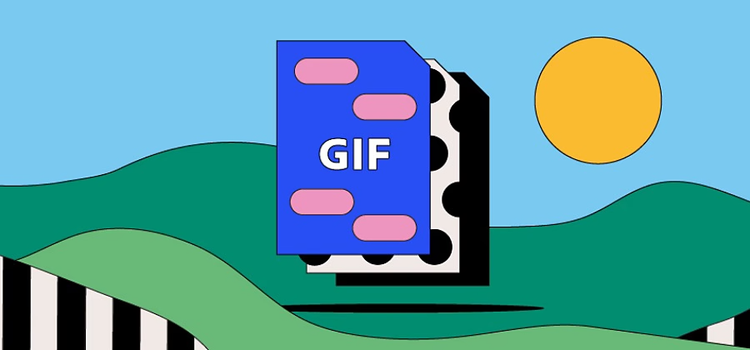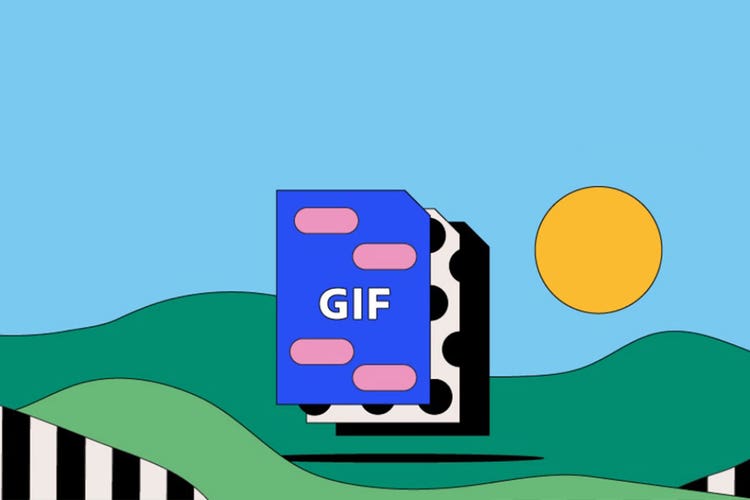PHOTOGRAPHY
GIF files.
GIF image files are commonly used on the web to display graphics and logos. They also support basic animation, which means they’re a popular file format for memes on social media sites. Learn more about the key features of a GIF file, how to create one and the advantages and disadvantages of the GIF format.

https://main--cc--adobecom.hlx.page/cc-shared/fragments/seo-articles/get-started-notification-blade
What is a GIF file?
You’ll likely see GIF files every time you check your social media feeds. But what does GIF mean and how do these files work?
GIF stands for Graphics Interchange Format. GIF is a raster file format designed for relatively basic images that appear mainly on the Internet. Each file can support up to 8 bits per pixel and can contain 256 indexed colours. GIF files also allow images or frames to be combined, creating basic animations.
These files use the .gif extension and can be opened in a wide range of programmes.
History of the GIF file.
The GIF file format was created in June 1987 by computer scientist Steve Wilhite and his team at the US technology company CompuServe.
Originally designed to speed up the download process for large images, it also replaced CompuServe’s black-and-white format for file downloads with a colour format.
CompuServe’s early versions of the GIF file format were called 87an and 89a. Along with black-and-white XBM files, GIF was the first image format to commonly appear on websites.
The GIF file has evolved to offer more animation functions. For example, creators gained the ability to loop GIF animations in 1995, following work on the Netscape Navigator browser. Facebook began supporting GIFs in 2015, with Instagram following in 2018.
What are GIF files used for?
The Graphics Interchange Format is designed to display simple images and animations. But what is a GIF used for specifically?
Web graphics and logos.
Because they can only display a limited number of colours, GIF files aren’t built to contain high-quality photographs. Instead, GIFs are better suited to graphics and logos featuring sharp lines and edges — and relatively few colours.
Memes and online animations.
You’ll come across endless animated GIFs on websites and social media platforms. GIF files create a flipbook effect by containing a number of related images, giving the impression of a video — but they don’t feature any sound and tend to have a low resolution. GIFs are also a popular way to post online memes, humorous clips spread by social media users.
Pros and cons of GIF files.
Learn about the advantages and disadvantages of GIFs before selecting this file format for your images.
Advantages of GIF files.
- What GIF animations lack in sophistication they make up for with speed and impact. They’re quick to create, don’t require too much technical know-how and can spread across social media sites like wildfire as memes.
- The colour limits placed on GIFs keep their file sizes relatively small. This can help them load faster on web pages.
- GIF files boast a feature called lossless compression. This means their image quality doesn’t decline when their data gets compressed.
Disadvantages of GIF files.
- The GIF file format only supports a palette of 256 colours, meaning images may have a low resolution or even look slightly blurry.
- Because they use multiple images, animated GIF files can sometimes be tricky to return to and edit.
- Although GIFs are generally small and quick to load, a slow Internet connection could delay or negatively affect their appearance on a webpage.
How to open a GIF file.
Opening GIF files is straightforward on a Mac or Windows computer. Simply search for the file name and double-click it when it appears. Then, choose compatible software, such as Adobe Photoshop. Just click your preferred programme. GIFs have wide compatibility — they can be opened through most major image and video editing programmes.
GIFs are also easy to open through web-based browsers, including Chrome, Firefox and Internet Explorer. In the case of Internet Explorer, simply click the File menu and then Open. Select Browse followed by All Files. Click the GIF file name and then Open.
How to create and edit a GIF file.
Follow these easy steps to create and edit an animated GIF using Adobe Photoshop:
- Upload the images you want to use in your GIF to Photoshop by heading to File > Scripts > Load Files into Stack.
- Click Create Frame Animation.
- Click Make Frames From Layers in the Timeline panel.
- Choose the Repeat menu in the Timeline panel and select Forever.
- Simply hit Play at the bottom of the Timeline panel to preview your animation.
- To share, head to File > Export > Save for Web (Legacy).
